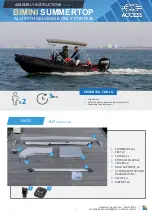
2.4. Attaching the Payload to the HEX300-230HL
Inspect the mounting surface for dirt or unwanted residue and clean if necessary. Clean the
mounting surface with a lint free cloth and isopropyl alcohol and allow the cleaning solvent to
completely dry.
Aerotech recommends that customers use a representative payload during start-up to prevent
accidental damage to the stage and the payload. Proceed with the electrical installation and test the
motion control system in accordance with the system documentation. Document all results for
future reference. For information on electrical installation refer to
and the documentation
delivered with the stage.
The payload must be flat, rigid, and comparable to the stage in quality to maintain optimum
performance.
IMPORTANT
: For valid system performance, the mounting interface should be flat
within 10 µm over the contact area.
Loads should be mounted close to the center of the hexapod, if possible, to reduce offset loading.
The maximum load is based on the distance from the payload’s center of mass to the center of the
platform’s mounting surface. External forces to the payload or hexapod platform should be
considered when determining the maximum payload. Add process forces to the mass of the payload
when determining the total applied force.
HexGen
®
hexapods can be mounted to a horizontal surface or a vertical surface. The orientation will
also be critical in determining the load capacity. A horizontal mounting surface is recommended for
maximum payload capabilities. Refer to the load curves that follow for allowable loading as a
function of orientation and load offset.
IMPORTANT
: HexGen
®
hexapods can backdrive under some vertical loads. Refer to the
graphs that follow for more information.
Figure 2-4:
HEX300-230HL Vertical Load Capabilities
2.4. Attaching the Payload to the HEX300-230HL HEX300-230HL Hardware Manual
22
www.aerotech.com
















































